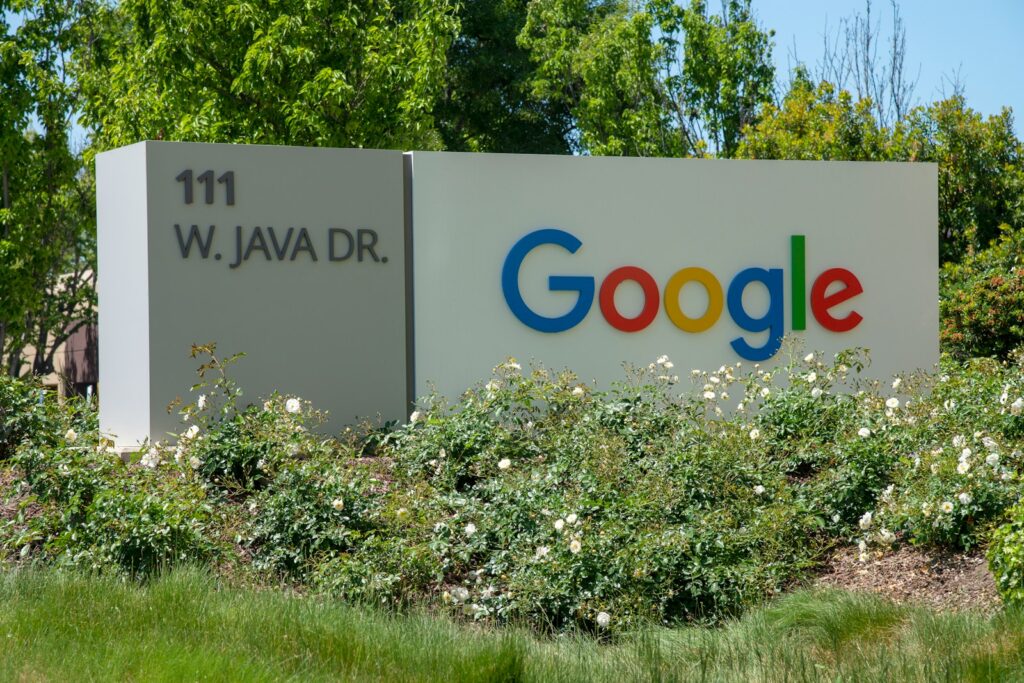Main Points:
- Google’s Strategic Move into Crypto: Google is actively lowering entry barriers for Bitcoin and other cryptocurrencies by enhancing interoperability between Web2 and Web3 systems.
- Enhanced Wallet and Login Experience: Integrating Google account login for crypto wallets aims to provide familiar, user-friendly access, comparable to mainstream Web2 services.
- Advanced Cryptography and Trust: The company is exploring advanced cryptographic technologies such as Zero-Knowledge Proofs (ZKP) to secure and streamline interactions between on-chain and off-chain systems.
- Institutional Adoption through ETFs: The growing influence of Bitcoin ETFs is not only attracting institutional investors but is also serving as a bridge between traditional finance (TradFi) and the cryptocurrency ecosystem.
- A Future of Seamless Integration: Google’s initiatives, in combination with evolving ETF frameworks, are set to accelerate mainstream cryptocurrency adoption by merging the convenience of Web2 with the innovations of Web3.
1. Google’s Strategic Move into Crypto
In recent developments that mark a significant evolution in the cryptocurrency landscape, Google has embarked on an ambitious initiative to lower the barriers for entry into the Bitcoin ecosystem. Traditionally known for its deep roots in Web2 technologies, Google is now setting its sights on integrating Bitcoin and other digital assets into its suite of services. This strategic move is part of a broader vision to bridge the gap between Web2 and Web3, providing users with a seamless experience that merges the reliability of established online services with the innovations of blockchain technology.
At a recent event hosted in Hong Kong—the “Bitcoin Tech Carnival” held at the Four Seasons Hotel—Google’s Web3 specialist, Kyle Song, outlined the company’s evolving strategy. Song emphasized that the momentum generated by the listing of Bitcoin ETFs over the past year has created new opportunities for major tech companies like Google to explore the digital asset space. By establishing cooperative relationships within the Bitcoin ecosystem, Google is not merely observing from the sidelines; it is actively collaborating with industry stakeholders to forge a future where cryptocurrencies become an integral part of everyday digital interactions.
This move is significant in that it not only represents a nod to the growing legitimacy of digital assets but also signifies the potential for traditional tech giants to transform the user experience. By reducing the friction typically associated with cryptocurrency transactions and management, Google is poised to usher in a new era where digital assets are accessible to a broader audience. This initiative signals a shift in how cryptocurrencies might be integrated into everyday technology platforms, making them as user-friendly and reliable as the services people have come to expect from established Web2 giants.

2. Enhanced Wallet and Login Experience
A central component of Google’s initiative is the enhancement of cryptocurrency wallet functionality. Recognizing that one of the primary obstacles to widespread cryptocurrency adoption is the often clunky and unfamiliar user interfaces associated with digital wallets, Google is committed to offering an experience that rivals conventional Web2 platforms. One of the key features being developed is the integration of Google account login for cryptocurrency wallets. This means that users can leverage their existing Google credentials to access and manage their digital assets, eliminating the need for separate and often cumbersome authentication systems.
The goal is to achieve a level of ease and familiarity that most users associate with their everyday online experiences. Just as individuals can seamlessly log into a variety of services using their Google accounts, they will soon be able to manage their crypto assets with similar convenience. This integration not only simplifies access but also leverages the robust security infrastructure already in place with Google accounts. By doing so, Google is effectively addressing one of the main pain points of cryptocurrency management: the balance between security and ease of use.
Moreover, this integration is expected to have a ripple effect across the broader ecosystem. As more users begin to engage with cryptocurrencies through platforms that they already trust and understand, the overall adoption of digital assets is likely to accelerate. The approach is emblematic of a broader trend where traditional user experiences are being reimagined to include the functionalities of decentralized systems, thereby fostering an environment where the benefits of both Web2 and Web3 can be fully realized.
3. Advanced Cryptography and Trust
In parallel with enhancing user interface and access, Google is also investing in the backend technologies that ensure secure and trustworthy interactions between on-chain and off-chain systems. A particularly noteworthy aspect of this effort is the exploration of advanced cryptographic techniques, such as Zero-Knowledge Proofs (ZKP). ZKP is a method by which one party can prove to another that a statement is true without revealing any additional information. This technology is crucial in enhancing the privacy and security of transactions, especially in a decentralized ecosystem where data integrity is paramount.
By incorporating ZKP and similar technologies, Google aims to build a robust framework that underpins the trustworthiness of both digital wallets and transaction systems. This technical foundation is essential not only for individual users but also for institutional entities that require high levels of security and compliance. In the context of bridging Web2 and Web3, these advanced cryptographic methods represent the cutting edge of ensuring that data can be shared and verified in a secure manner, even across different platforms and regulatory environments.
Furthermore, the integration of such technologies may help to alleviate some of the skepticism that still surrounds cryptocurrencies. One of the lingering concerns among potential users and institutional investors alike is the security of their assets in a largely decentralized and sometimes volatile market. By demonstrating a commitment to using state-of-the-art cryptographic techniques, Google is positioning itself as a reliable partner in the digital asset space, capable of providing the same level of trust and security as traditional financial institutions.
4. Institutional Adoption through ETFs
The recent developments in the realm of Bitcoin ETFs have had a profound impact on the cryptocurrency market, and Google’s initiatives are perfectly timed to ride this wave of institutional adoption. Bitcoin ETFs have opened up new avenues for traditional financial institutions to incorporate digital assets into their portfolios. As ETFs begin to be used as collateral and integrated into broader financial systems, they are acting as a bridge between the traditional finance (TradFi) world and the burgeoning cryptocurrency ecosystem.
Brian Mahoney, co-founder of the Bitcoin Layer 2 project “Mezo,” highlighted the transformative potential of ETFs in an industry increasingly dominated by institutional interest. According to Mahoney, the acceptance of Bitcoin ETFs as legitimate financial instruments signals a shift in how cryptocurrencies are perceived and utilized. As institutional investors begin to view cryptocurrencies not just as speculative assets but as integral components of modern financial systems, the overall market is poised for a period of sustained growth and maturation.
This institutional interest is particularly important because it brings with it a level of financial rigor and regulatory oversight that has often been missing from the early stages of cryptocurrency markets. The entry of traditional financial institutions, supported by products like ETFs, provides a much-needed infusion of legitimacy and stability. In turn, Google’s push to integrate user-friendly cryptocurrency management tools complements this trend by addressing the needs of everyday users, thus helping to create a balanced ecosystem that caters to both retail and institutional markets.
Moreover, the combination of ETF-driven institutional adoption and improved consumer-facing technology suggests a future where digital assets are no longer niche products but become central to the broader financial landscape. This dual-pronged approach of enhancing both institutional credibility and user accessibility could serve as a blueprint for how traditional tech companies can successfully navigate and lead in the rapidly evolving world of digital assets.
5. A Future of Seamless Integration: Bridging Web2 and Web3
The convergence of Google’s initiatives with the evolving trends in the cryptocurrency space paints an exciting picture for the future of digital assets. By leveraging its robust infrastructure and global user base, Google is uniquely positioned to act as a conduit between the established world of Web2 and the innovative realm of Web3. This seamless integration is likely to be a game-changer, particularly for users who have long been curious about digital assets but have been deterred by the technical complexities and perceived risks.
Recent reports from various technology and financial news outlets have underscored a broader trend: the increasing willingness of mainstream companies to experiment with and adopt blockchain technologies. Google’s steps are part of a larger movement where tech giants are beginning to recognize the transformative potential of decentralized systems. This shift is not only about technological innovation but also about redefining user trust and engagement in an era where digital and physical worlds are becoming increasingly intertwined.
In addition to enhancing the user experience and security of digital asset management, Google’s actions may also stimulate further regulatory clarity and innovation within the cryptocurrency industry. As more established institutions invest in digital assets, regulators are likely to develop frameworks that encourage transparency and protect consumers, thereby paving the way for a more mature market. Such developments could help to dispel the notion that cryptocurrencies are merely speculative or risky, replacing it with a narrative of innovation, security, and broad-based adoption.
Looking ahead, the integration of Web2 conveniences with Web3 innovations may well become the norm. As Google and similar companies continue to explore and invest in blockchain technologies, we can expect to see a host of new applications that not only enhance financial transactions but also redefine digital interactions across a range of sectors. From secure digital identities to streamlined payment systems, the potential applications are vast, and the impact on everyday life could be profound.
The overarching theme is clear: the future of digital assets will likely be characterized by a harmonious blend of user-friendly design and cutting-edge technology. With Google leading the charge, the pathway to mainstream cryptocurrency adoption is becoming increasingly clear, offering a glimpse into a future where the advantages of decentralized finance are accessible to all.
Future outlook
Google’s latest initiatives in the cryptocurrency arena signify a pivotal moment in the evolution of digital assets. By actively working to reduce entry barriers and enhance user experience through features like Google account integration for crypto wallets, Google is effectively bridging the gap between traditional Web2 services and the innovative potential of Web3. Advanced cryptographic technologies, such as Zero-Knowledge Proofs, further bolster the security and trustworthiness of these systems, catering to both retail users and institutional investors.
The rising acceptance of Bitcoin ETFs is fueling broader institutional adoption, thereby stabilizing the market and lending greater legitimacy to the crypto ecosystem. As traditional financial institutions embrace digital assets, the dual approach of improved consumer accessibility and rigorous institutional frameworks is set to transform the market landscape. Google’s comprehensive strategy not only promises a more integrated and user-friendly digital asset experience but also paves the way for a future where the conveniences of Web2 and the innovations of Web3 converge seamlessly.
In conclusion, Google’s bold entry into the Bitcoin ecosystem is a harbinger of significant changes in the world of digital assets. As both technology and financial markets evolve, initiatives like these will play a crucial role in shaping a future where digital assets are not only more secure and accessible but also fully integrated into the global financial system. This convergence is expected to drive innovation, enhance user trust, and ultimately lead to a broader acceptance of cryptocurrencies as a mainstream financial instrument.


